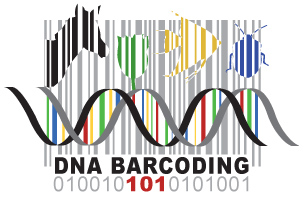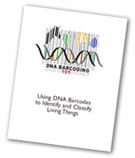Using DNA Barcodes to Identify and Classify Living Things:
Results & Discussion Answers
I. Think About the Experimental Methods
- Describe the effect of each of the following steps or reagents used in DNA isolation (Part II or Part IIa of Experimental Methods):
- Collecting fresh or dried specimens
Fresh samples are easier to isolate DNA from than other samples, so they maximize the chances of success. Dried specimens are common for plant and fungal collections, and often contain intact DNA, although this DNA can be more difficult to isolate. Other samples, such as those that are processed or degraded, can have less intact DNA or PCR inhibitors. - Using only a small amount of tissue
Using a small amount of tissue reduces carry-forward of PCR inhibitors present in the sample. These include metal ions (plants and animals), polysaccharides, and secondary metabolites (plants). - Grinding tissue with pestle
Grinding disrupts plant cell walls and animal chitin or connective tissue. It also produces small clumps of cells that are more easily lysed to release DNA. - Lysis solution
GuHCl lysis solution is a chaotropic agent, which interferes with hydrogen bonds and other interactions that stabilize stuctures. This dissolves the cell membrane and membrane-bound organelles (nucleus, mitochondria, chloroplast, etc.). In addition, GuHCL denatures biomolecules by disrupts hydrogen bonds with water surrounding them. This allows positively charged ions to form a salt bridge between the negatively charged silica and the negatively charged DNA backbone in high salt concentration. - Heating or boiling
Heating to 65°C with the GuHCl lysis solution helps to break down the cell and nuclear membranes, and also denatures enzymes that can degrade the purified DNA. Heating to 57°C helps with the binding and release of DNA to the silica resin in the presence of the GuHCl lysis solution and distilled water respectively.

 Download Protocol PDF
Download Protocol PDF